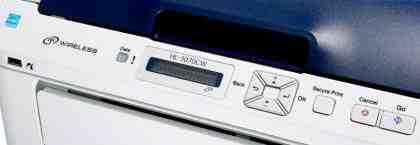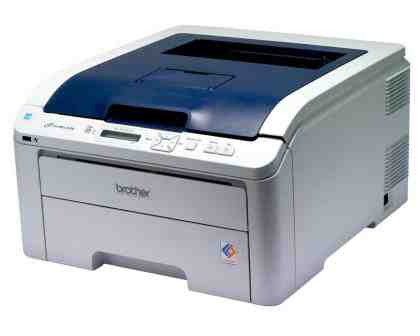Brother's LED-based HL-3070CW is one of few laser-class printers shipped without its consumables in place. Fortunately, setup is a reasonably simple job. This is a squat printer, but it's not especially pretty – its various logos and markings use a mix of fonts, and its overall appearance is somewhat old-fashioned.
For the price, though, it's a well-specified printer. There's no automatic duplexer, but it does have both wired and wireless network interfaces. The latter tends to be an expensive upgrade, so it's good to see it as standard for well under £200. There's a 250-sheet paper tray and a fold-down multipurpose feed slot, but only the memory is upgradable, from 64MB up to 576MB.

In our tests, the HL-3070CW came very close to Brother's claimed 16 pages per minute (ppm) speed in both mono and colour. At 14.1ppm, its colour output is particularly quick for a printer at this price. It's reasonably quiet, but the leading edge of each sheet tends to scrape along the slope of the output tray as it exits the printer, making an annoying grating noise. The multipurpose feed isn't marked with the correct orientation for envelopes, which the printer crumpled quite badly anyway.
We weren't impressed with the HL-3070CW's print quality, either. Black text was fine, but our black and white photo had quite pronounced banding and was too dark, with a resulting loss of detail. Colour photos suffered from a green bias that made skin tones look faintly seasick and many other subjects dull. Illustrations and other graphics were better, although the printer's dither patterns were visible in some images and colours still looked cool.

Although the HL-3070CW comes with a 1,000-page starter toners and its four drums are rated for just 15,000 pages, its running costs are quite reasonable for light or medium use. Buying the printer with the toner and replacement drums necessary for 18,000 mono and 9,000 colour prints would cost less than £1,600, which is quite competitive. Printing larger volumes - which few people need to do - would soon get expensive, however.
If you can live without Wi-Fi and the quick print speeds, HP's LaserJet Pro CP1525n costs the same, produces better quality and is cheaper to run.
Basic Specifications | |
|---|---|
| Rating | *** |
| Maximum native print resolution | 600x2,400dpi |
| Maximum enhanced print resolution | 600x2,400dpi |
Quoted Speeds | |
| Quoted speed, mono A4 | 16ppm |
| Quoted speed, colour A4 | 16ppm |
Tested Speeds | |
| Mono page from sleep time 1.0 | 33s |
| Time for two 10x8in photos 1.0 | 31s |
| Time for six 6x4in photos 1.0 | 45s |
Physical and Environmental | |
| Standard printer interfaces | USB, 10/100 Ethernet, 802.11b/g wireless |
| Optional printer interfaces | none |
| Size | 250x409x466mm |
| Weight | 19.5kg |
| Noise (in normal use) | 53dB(A) |
| Duty cycle | 25,000 pages |
Paper Handling | |
| Maximum paper size | A4, custom length up to 406.4mm |
| Maximum paper weight | 163gsm |
| Standard paper inputs | 2 |
| Standard paper input capacity | 251 |
| Maximum paper inputs | 2 |
| Maximum paper input capacity | 251 |
| Duplex (code, cost if option) | No |
General | |
| Printer technology | single-pass colour LED |
| Language(s) | PCL 6, PostScript 3 |
| Supported operating systems | Windows 2000/XP/Vista/7, Mac OS X 10.3.9 or greater, Linux |
| Standard printer memory | 64MB |
| Maximum printer memory | 576MB |
| Other laser features and options | none |
Buying Information | |
| Price | £188 |
| Price of 2nd paper cassette | N/A |
| Capacity of supplied black toner | 1,000 pages |
| Capacity of supplied colour toners | 1,000 pages |
| Capacity of supplied drum(s) | 15,000 pages |
| Estimated colour TCO - three years medium | £1571.11 |
| Estimated colour TCO - three years heavy | £6334.44 |
| Warranty | one year onsite |
| Supplier | http://www.printerbase.co.uk |
| Details | www.brother.co.uk |
| Consumable parts and prices | £17 |
Tested Print Speeds | |
| Time for two 10x8in photos 1.0 | 31s |
| Time for six 6x4in photos 1.0 | 45s |











